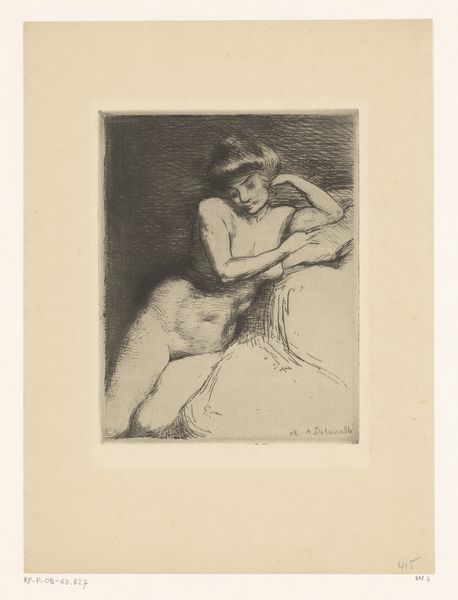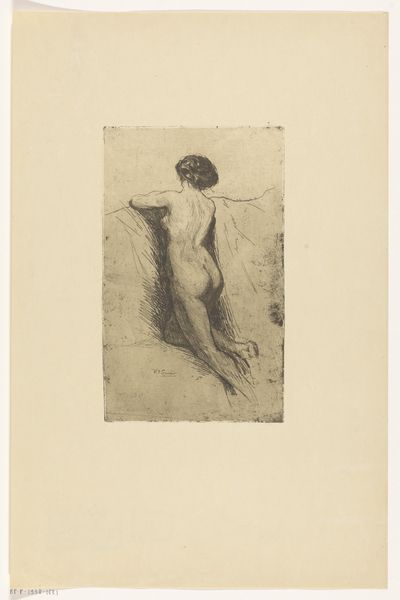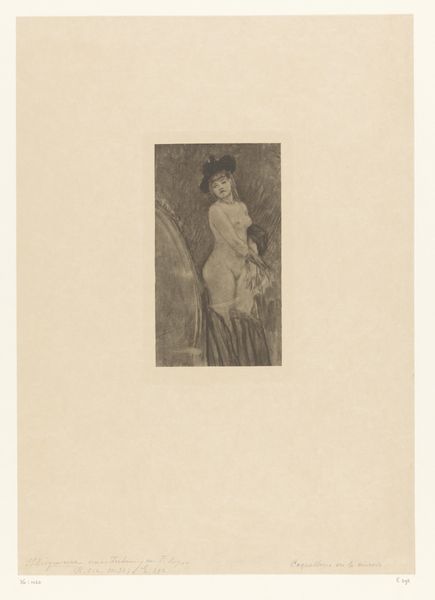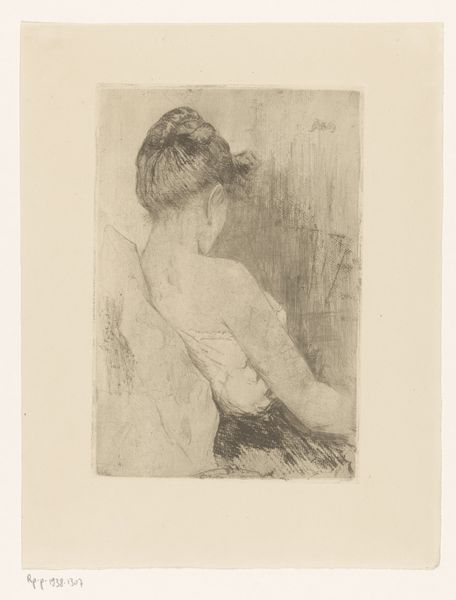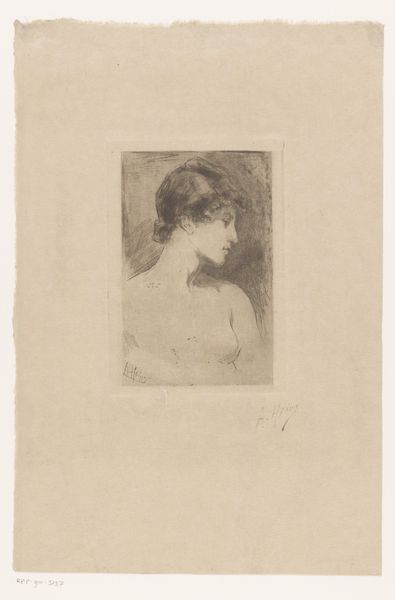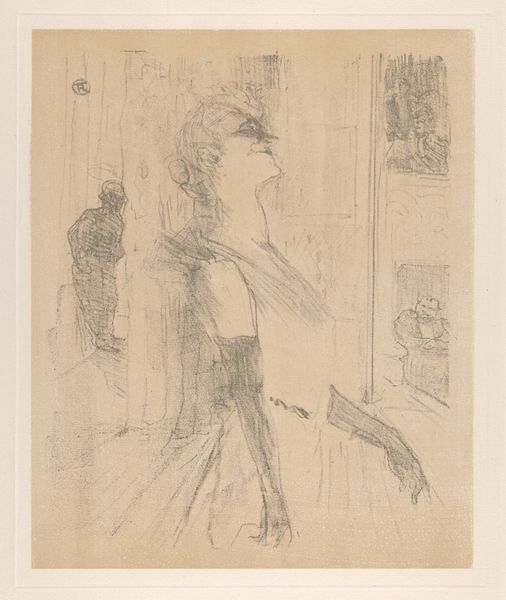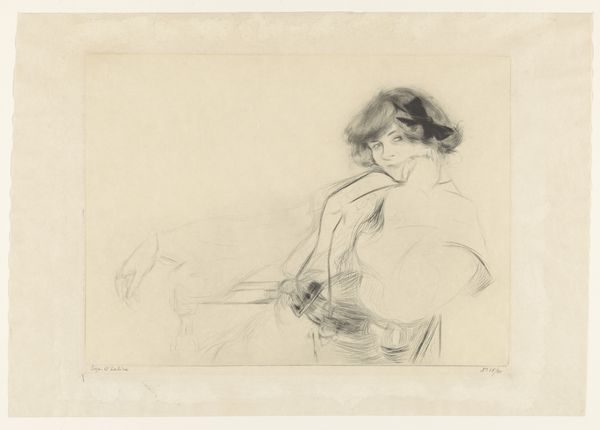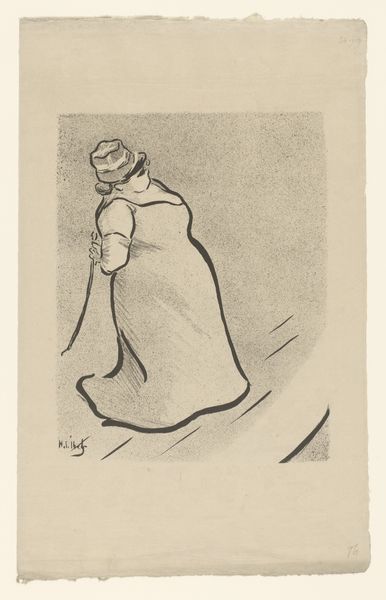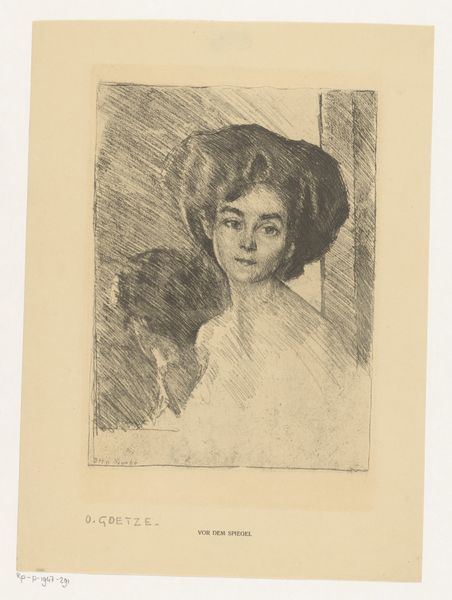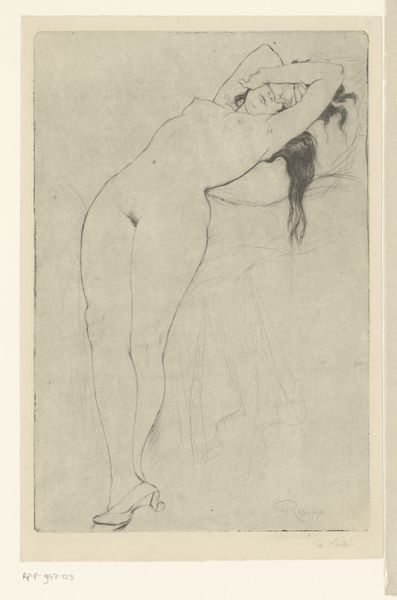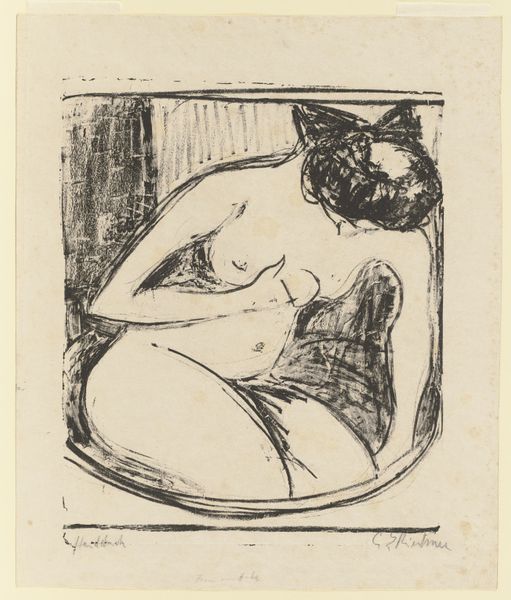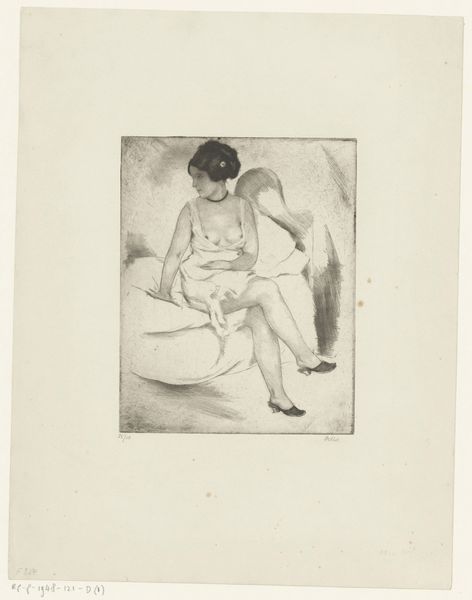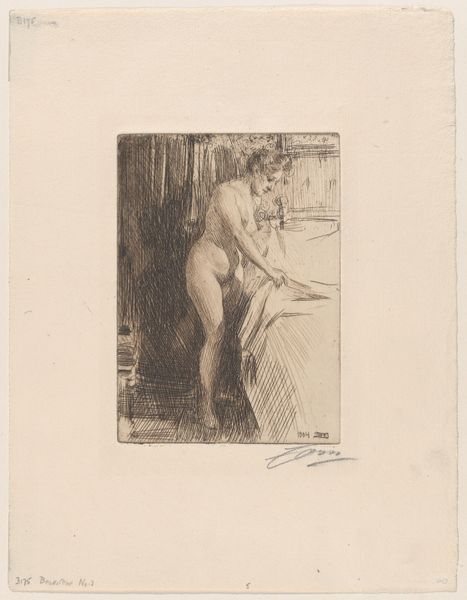
drawing, print, etching, ink
#
portrait
#
drawing
#
art-nouveau
# print
#
etching
#
figuration
#
ink
#
intimism
Dimensions: height 200 mm, width 122 mm
Copyright: Rijks Museum: Open Domain
Curator: Look at this, it’s "Portret van de zangeres van Café Concert", by Edgar Chahine, created around 1899. An etching with ink on paper. Editor: Hmm, she looks, frankly, a bit bored. Almost like she's internally narrating some minor domestic drama. Curator: The beauty of a drypoint etching like this lies in the artist’s process. The very act of incising that copper plate dictates the nature of the line itself: a bit coarse, furry even, which lends itself to a portrait full of immediacy, less slick. Editor: I find that immediacy a tad deceptive. The dress, that elaborate undergarment... clearly announces a performed femininity. Is that why she appears disconnected, because her work asks a flattening and distortion? Curator: I suppose you could view her costume as a sort of gilded cage, or you could also view it as a tool to craft her artistic persona. The Art Nouveau aesthetic certainly saw potential in embracing stylized artificiality. It allowed an avenue into intense emotion. Editor: Perhaps. But looking at the print as object, how its textures are generated mechanically through the act of production--the corrosive baths, the heavy presses, the disposable wipes. It makes me think about how a stage persona, as much as a portrait, is a product. Consumable, repeatable and cheap. Curator: The cabaret singer... a fascinating nexus point. But looking at Chahine, through the lens of, say, Degas and Lautrec, do you not feel a profound tenderness beneath the artifice? Something about her gaze, weary, confident? Editor: Tenderness can be purchased, displayed, traded, no? This particular impression feels less like genuine emotion and more like a prototype of mass-produced femininity, perfectly aligned with the rising tides of commodity culture. Curator: Ah, I see your point. But even as that culture threatens to objectify, the artist allows her to keep her humanity. It's not the surface glamour, but the shadow behind the eyes that fascinates me. Editor: It certainly offers up some points for further contemplation. A woman, manufactured, laid bare in line. It's powerful, the artist’s labor becomes inextricably linked to the woman’s.
Comments
No comments
Be the first to comment and join the conversation on the ultimate creative platform.
